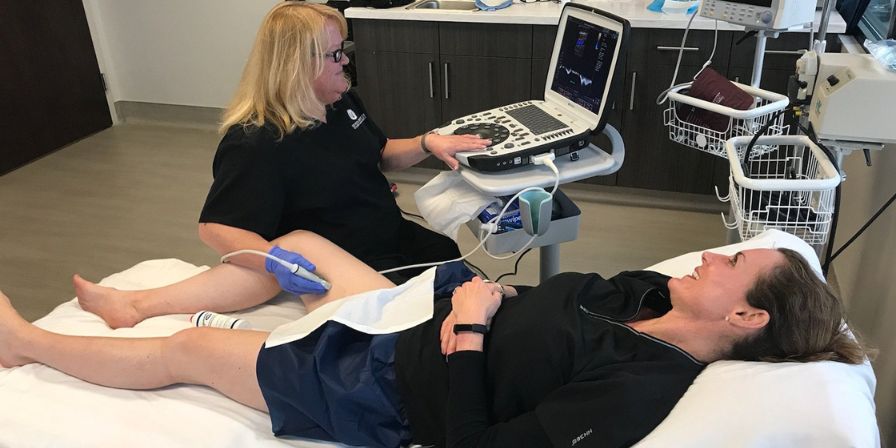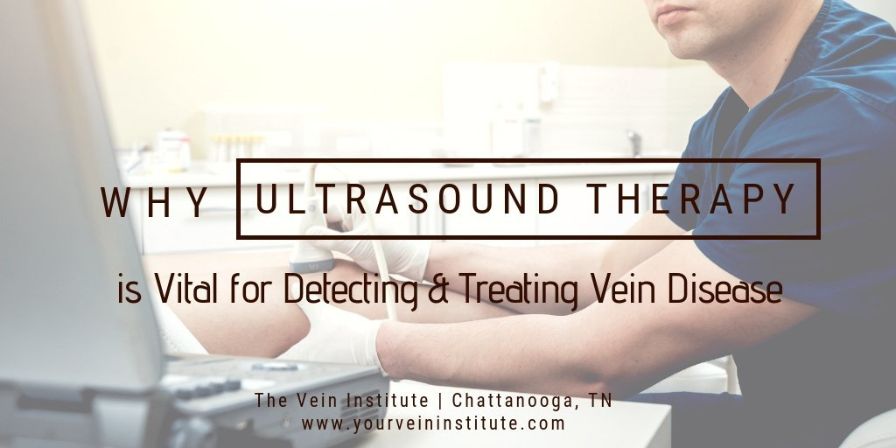Ultrasound procedures usually bring to mind images of expecting parents marveling at the tiny heartbeat of their unborn child. Or, later, discovering whether they will welcome a baby boy or girl into the world. Ultrasound machines can monitor the baby’s development and issues that may arise during pregnancy. But OBs aren’t the only doctors who rely on ultrasound technology. In fact, the ultrasound machine is the most important device for detecting vein issues that otherwise would not be seen, including venous diseases.

How Does Ultrasound Work to Diagnose Vein Disease?
Ultrasound works by emitting inaudible sound waves to create a visual image. Combined with Doppler radar (which monitors sound wave fluctuations), we can see a more complete picture of the vein structure. A clearer picture helps us assess the speed and direction of blood flow. Blood clots usually indicate more serious venous problems. However, patients who are unhappy about unattractive spider veins or unsightly varicose veins could still have vein problems. Spider or varicose veins develop when faulty, leaking vein valves allow blood to pool in the lower legs. The blood flows back down the legs instead of returning upward back to the heart as it should.
How is Ultrasound Used in Vein Disease Treatment?
For patients seeking treatments for vein problems, we use ultrasound technology in many office procedures. In treatments such as endovenous ablation, sclerotherapy, and microphlebectomy, ultrasound helps doctors accurately pinpoint where the vein problems are located.
Sclerotherapy is a technique that intentionally damages unwanted visible surface veins. It can be used on both spider veins and varicose veins. After we inject the solution, the body will respond by dissolving and eliminating the damaged veins. Spider vein treatments are a process and typically involve a series of treatments over a period of time.
Endovenous ablation techniques target larger malfunctioning superficial veins. Here we use the ultrasound to guide the placement of a laser fiber into the targeted vein. We then use ultrasound to apply diluted local anesthesia to numb the vein site before the targeted intense heat from the laser seals the vein.
Microphlebectomy is another minimally-invasive procedure that is used to remove medium to large-sized, bulging varicose veins. We typically perform microphlebectomy in conjunction with endovenous ablation as part of a comprehensive plan of patient treatment.
All of the above vein procedures offer patients safe, effective, and quick solutions for vein correction. They also produce beautiful results with minimal pain or downtime. If you are concerned about varicose veins, spider veins or vein health in general, call The Vein Institute for a complimentary consult with our vein specialist Dr. Vincent Gardner at 423-551-8346.

